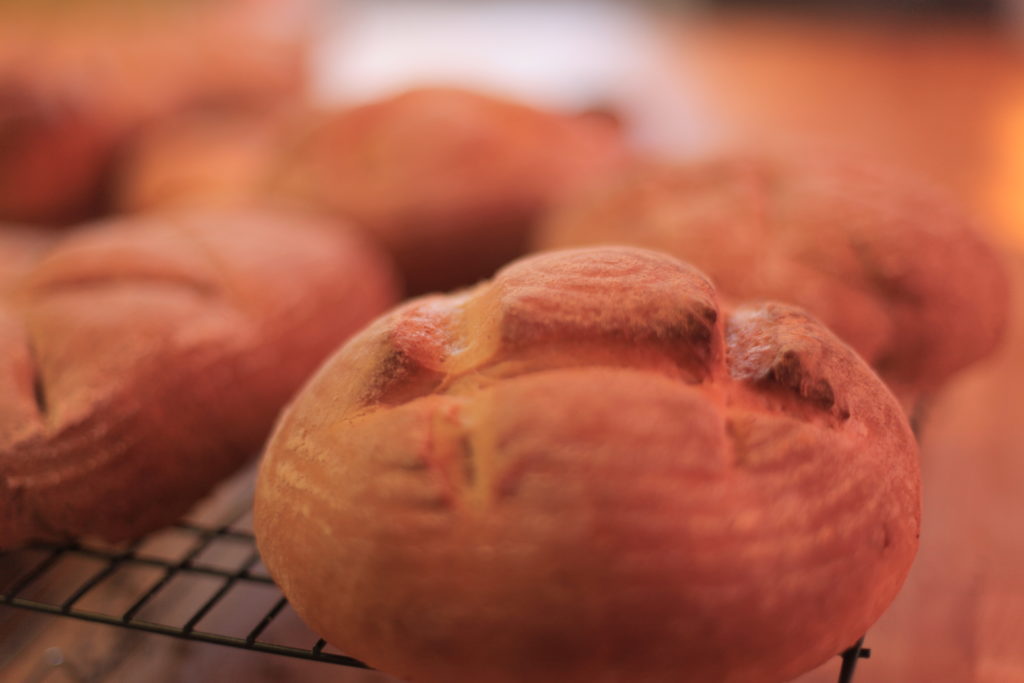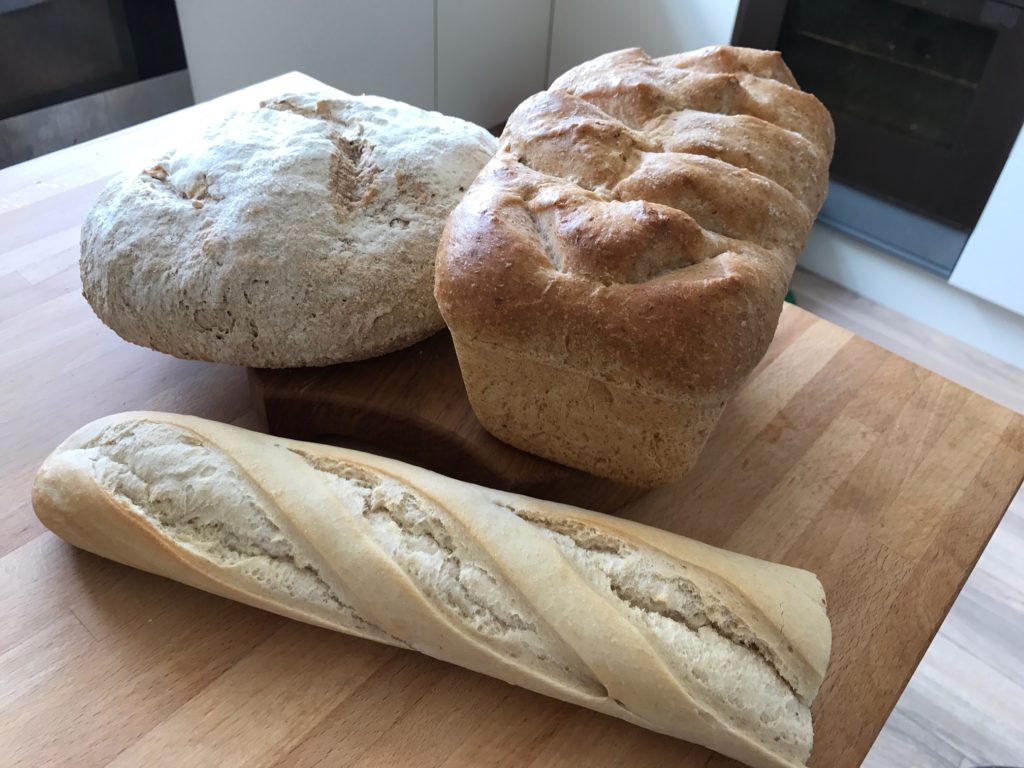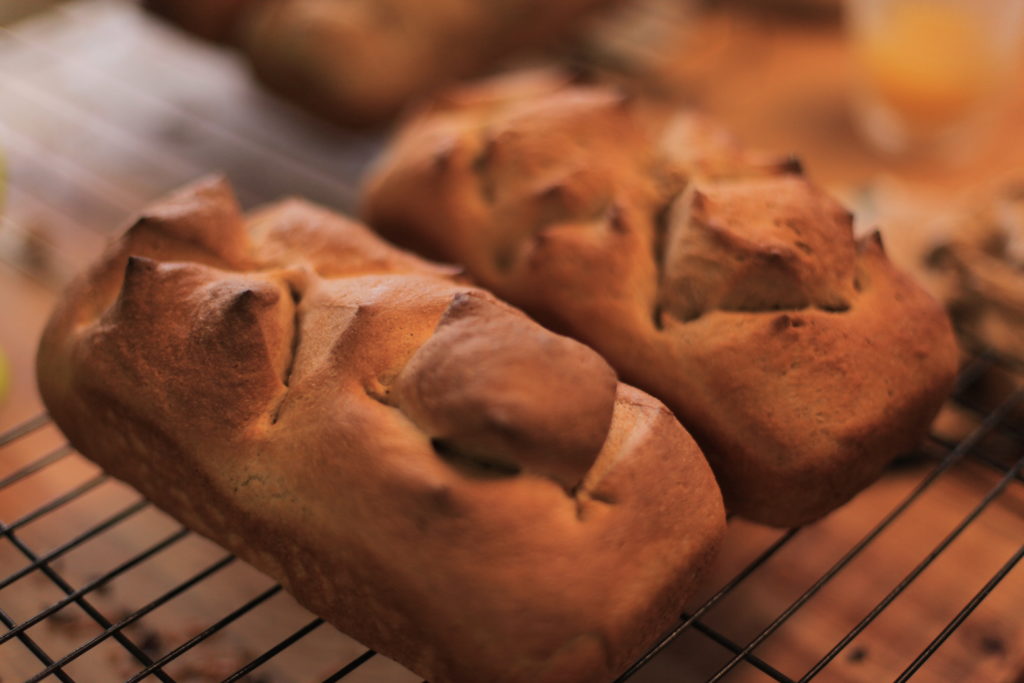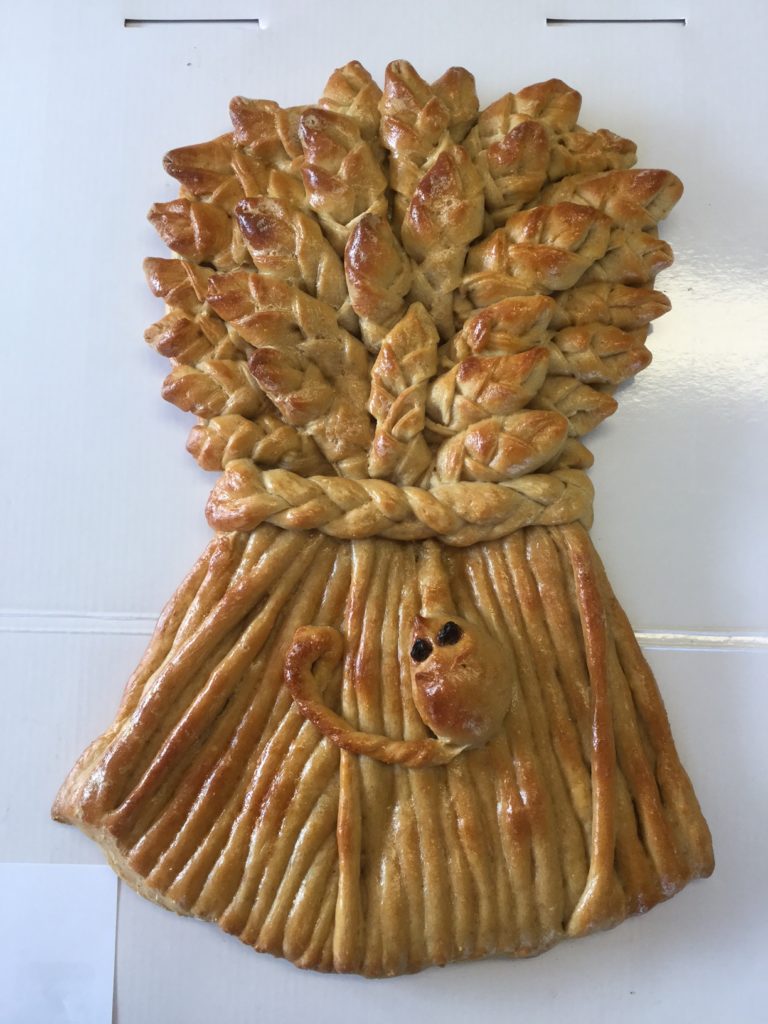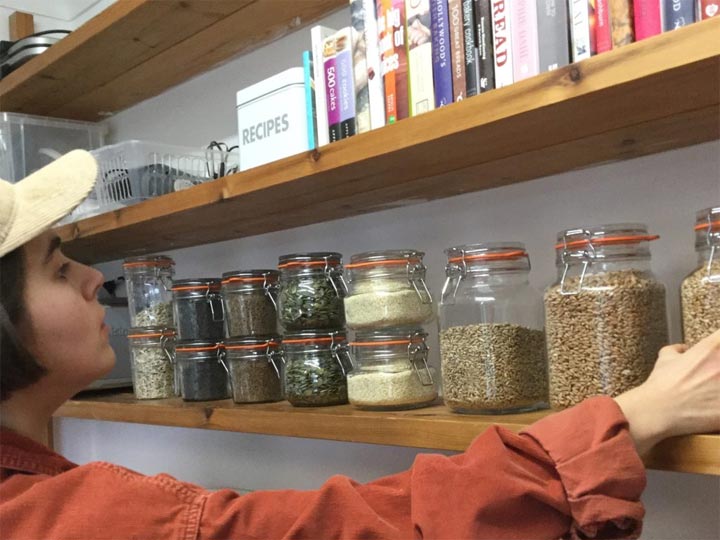Shop bought or home baked?
Posted on July 20th, 2017
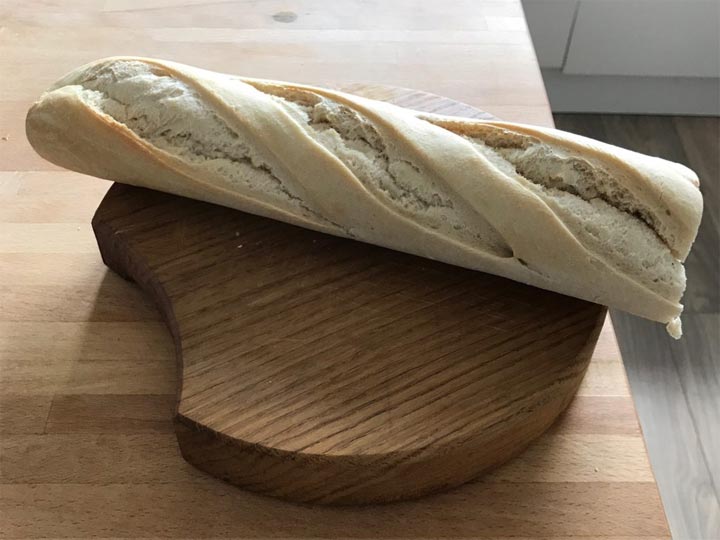
Clean eating isn’t just about what you put on your table, it’s a lifestyle choice. And it’s one we embrace here at Canterbury Baking School.
Look at the loaf of bread on your kitchen counter or in your freezer. Sure it has flour, water and salt in it, like all bread. But we reckon it’s also got several extra ingredients in it that dilute it’s purity, and some things that you might not want to put into your body!
Take a standard supermarket white loaf. One that we found contained extra ingredients like soya flour and vegetable oil, along with several E numbers like E471, E481 and E920, which is an amino acid that is commercially produced from (sometimes human!) hair and feathers. So even though this bread is marked as suitable for vegetarians, that may not actually be the case!
It isn’t just white bread that has added ingredients either. Even wholemeal can have some extra components like part oil and caramelised sugar. Palm oil is high in saturated fats, whilst also being low in healthy polyunsaturated fats; which means it could increase the risk of heart disease.
White, brown, or neither?
So which is better for you; white or brown bread? Unfortunately, in their most common form, both can be harmful.
In order to digest white bread, our bodies must produce large amounts of insulin, which can often lead to weight gain. White flour has also been bleached with harmful chemicals, and loses most of its nutrients through the refining process. Essentially, all white bread does is help you gain weight.
Brown bread doesn’t fare much better. According to some studies, most brown flour used in mass produced bread is simply bleached white flour with some colouring added back in (which would explain the caramelised sugar in our brown supermarket loaf!).
Even wholemeal bread, a supposedly healthier option, has its pitfalls. When bread is freshly made, the wheatgerm begins to deteriorate rapidly. To preserve their loaves, many companies add chemically treated wheatgerm back in to stop the deterioration.
Here at Canterbury Baking School, we use heritage grains, which we mill ourselves, in order to preserve our bread’s natural benefits and nutrients. We don’t add any preservatives or chemicals. Wheat has become one of the most tampered-with grains in common use, but we keep ours natural and pure!
Keeping your bread pure and cutting out added preservatives and chemicals can have several health benefits. It won’t require large amounts of insulin to process, which means that you can regulate your weight more.
Home-baked bread also contains much less sodium than supermarket loaves, meaning less risk of high blood pressure and heart disease. Baking your own bread from your own grains also keeps the natural wheatgerm intact, which means that you will benefit from all of its vitamins and minerals.
We’re proud members of the Real Bread Campaign (which you can check out here) and we’re eager to spread their message. So why not get your clean eating journey off right and come to one of our workshops and learn how to make the healthiest bread possible!
As always, comments and feedback is appreciated!

